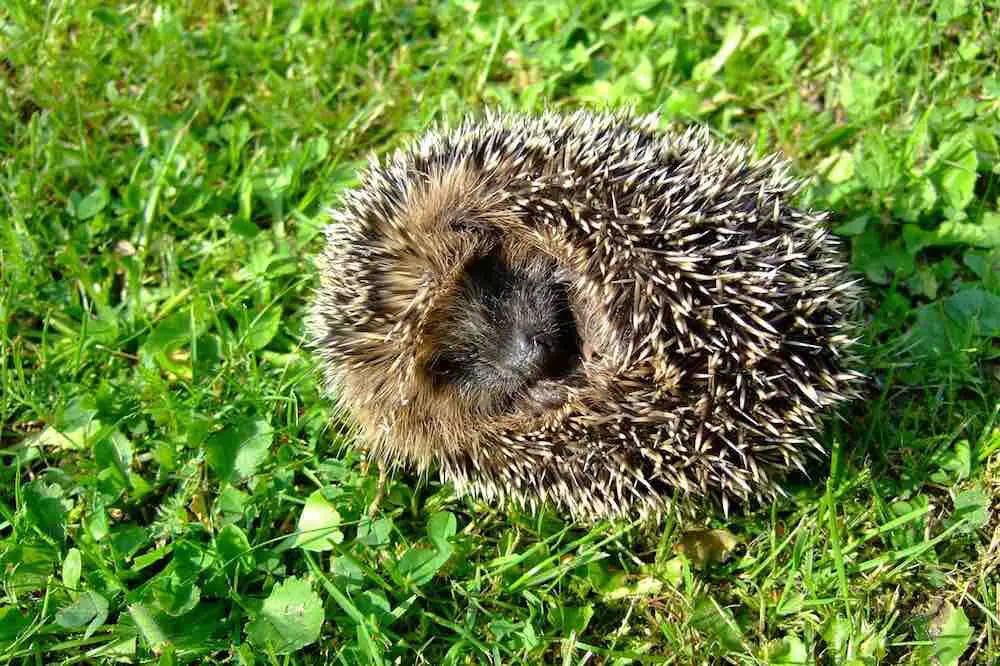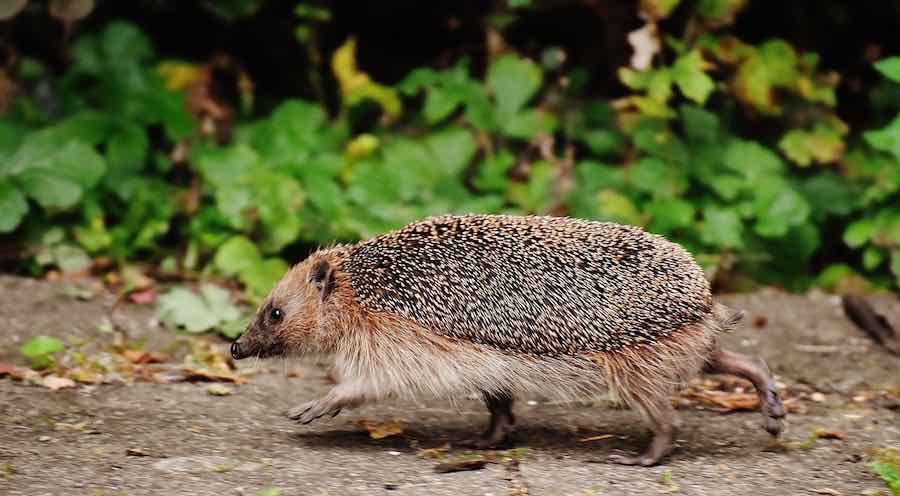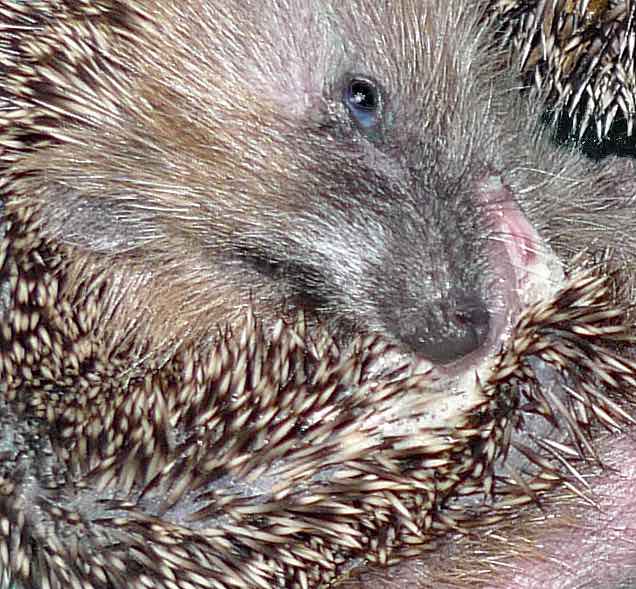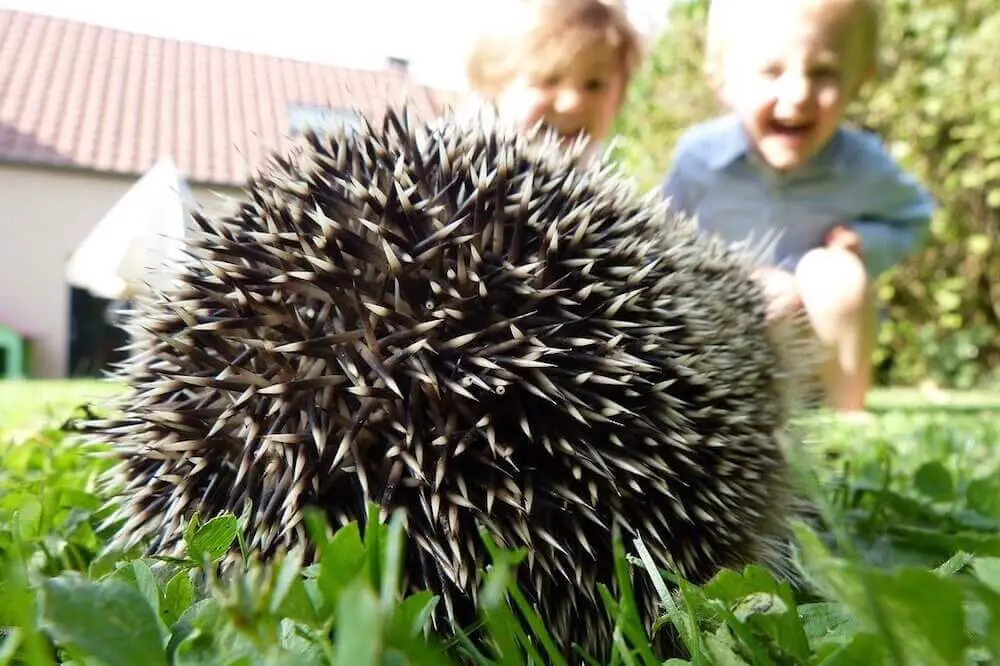
If you have regular hedgehog visitors to your garden, and would like to help to keep them safe, it may be useful to know how do hedgehogs protect themselves? This can give you an insight into what else you can do to help them.
So then how do hedgehogs protect themselves? Hedgehogs protect themselves by running away from danger. If they can’t, then they will curl into a ball, pulling in their head, legs and tail, pushing out their quills. They can also make defensive noises such as hisses, clicks and screams. They may also use self-anointing to hide their smell.
So we can see a very brief answer above to the question of how do hedgehogs protect themselves. There is of course much more detail to go into, which I have done below. I have also talked a bit about the animals that attack hedgehogs, and other threats that they can experience. Read on to find out more.
Contents
How Do Hedgehogs Protect Themselves?
Before we go into more detail about the question of how do hedgehogs protect themselves, let’s take a second to look at some important information about them.
Hedgehogs are solitary creatures, and as such prefer to live alone. As their name would suggest, they like to live in hedges and wooded areas. Over time, as the landscape of many of the countries they live in has changed, they have migrated to more urban areas.
Hedgehogs have a good sense of smell, and as they are nocturnal they will roam around at night using this to search for food.
Farmlands once provided a safe haven for hedgehogs to sleep and find food in. As more of the farmland has become active, and less left undisturbed, this has meant less available food for hedgehogs.
Also, as more of the countryside has been used to build residential and business areas, hedgehogs find themselves needing to live in these areas. This poses more threats to hedgehogs, and they need to protect themselves from these dangers.
Unfortunately they can’t protect themselves from all of these dangers, and that is why, certainly in the United Kingdom, the hedgehog population is facing a significant decline.
Hedgehogs are probably most famous for their spiky appearance! Now they don’t just have these spikes to look cool. They serve a number of purposes.
Hedgehogs have somewhere in between 3000 and 5000 of these spikes, known as quills. We will talk about how hedgehogs use these to protect themselves later, but they do have other uses too.
Now you maybe didn’t know this, but hedgehogs can swim, and they can use their quills to help with this. Each of their quills is filled with tiny pockets or chambers of air. These help hedgehogs to stay afloat, and so help to make them good swimmers.
1. Does Rolling Into A Ball Protect A Hedgehog?
Does rolling into a ball protect a hedgehog? Rolling into a ball does protect a hedgehog, particularly from predators. This allows hedgehogs to pull in their limbs and protect their head and stomach from predators by sticking out quills that cover their spine. Predators will then find it difficult to bite them or pick them up.

When you think about hedgehogs and the question of how do hedgehogs protect themselves, I bet the first image that springs to mind is a picture of a hedgehog rolled into a ball.
Now I used to play Sonic The Hedgehog a lot when I was a kid, and sadly we are not talking about hedgehogs rolling into a ball and firing themselves at predators! However, rolling into a ball does offer a hedgehog a good level of protection.
As I said above, a hedgehogs spine is covered with between 3000 and 5000 of these extremely sharp quills. A hedgehog will use its stomach muscles to engage their spine, and this is what makes their quills stick out.
The stomach muscles will pull different parts of the spine in different directions, and this gives the spikes a criss cross appearance, offering ultimate protection. The stomach and back muscles pull in their head, legs and tail to fully protect themselves. This makes it almost impossible for animals to either bite them or pick them up.
2. Do Hedgehogs Run Away To Protect Themselves?

Now hedgehogs are by no means fierce creatures. They don’t attack humans or other large animals, and would much prefer to avoid conflict. While they do have a number of ways of protecting themselves, probably the least glamorous of these is simply running away.
Hedgehogs will and do run away to avoid predators and other things they may sense as a danger. If you’re not there, you can’t get hurt right. Now I’m not comparing hedgehogs to Bruce Lee here, but one of my favorite Bruce Lee quotes, and the way he described his martial art was as:
The art of fighting without fighting!
So for a hedgehog one of the most simple and effective ways to avoid predators is to simply run away from them. Now they can’t run at the speed of light like Sonic The Hedgehog can, but they can move quickly enough to find a safe space to hide much of the time.
3. What Noises Do Hedgehogs Make To Protect Themselves?
Hedgehogs are way more vocal than you might think. I’m going to be honest I’ve not really heard them make any noises in my garden but I have seen plenty of videos on YouTube of them making all kinds of different vocalisations.
So what noises do hedgehogs make to protect themselves? They can make clicking sounds, similar to a popping sound but more aggressive, rather loud hissing noises, and hedgehogs can even scream too if really angry or hurt.
Probably the first warning sound that you might hear if a hedgehog is starting to feel threatened or under attack is a clicking sound similar to a popping noise.
They will do this if they feel another creature has entered their space, and looks to be a threat. This clicking or popping sound will get louder if the perceived threat remains.
How do hedgehogs defend themselves if this perceived threat is still there? You will probably find that they move on to an aggressive hissing sound. This is a definite sign for you or any predator to back off!
For you it’s not really so that you won’t get hurt. More so that you don’t put the hedgehog through any more distress.
Hedgehogs will also make a loud screaming sound. Whilst they may do this because they are fearful, this is more normally a sign that they have been hurt or injured in some way and are experiencing a high level of pain.
4. Do Hedgehogs Bite To Protect Themselves?

Hedgehogs can and will bite to protect themselves, but usually as a last resort. A hedgehog has around 36 teeth, which are small and sharp, and pointed at the ends. Getting a nip from one of these can hurt for sure, and will draw blood.
If attacked, a hedgehog can and will bite to protect itself. If you have a hedgehog as a pet you are normally pretty safe from this. I would however recommend wearing gloves when you are handling them.
5. Do Hedgehogs Self-Anoint To Protect Themselves?

This whole self-anointing this was new to me when I was doing some reading on hedgehogs. However, after doing some reading, it struck me that I have seen hedgehogs do this before in my garden. Whether or not it answers the question of how do hedgehogs protect themselves, I’m not so sure.
So what is the act of self-anointing? When a hedgehog does this, it will appear to foam at the mouth, creating an excess amount of saliva. It will rub this saliva all over its body, and can do this for an extended period of time. Up to half an our is not unusual for a hedgehog to self-anoint for.
There are competing theories as to why hedgehogs choose to self-anoint. Many hedgehog observers report that a hedgehog will do this when they encounter a new smell that interests them. Another theory is that hedgehogs do this as part of their grooming process.
Hedgehogs don’t bathe, or wash in water, although as I said above they can swim. Instead, rubbing saliva over their bodies does seem like it could be part of keeping themselves clean.
Yet another theory is that the process of self-anointing does actually help us with the question of how do hedgehogs protect themselves?
Hedgehogs may be doing this to cover or mask their own scent. They will do see to hide or protect themselves from any predators they sense may be around.
What Animals Will Eat Or Attack Hedgehogs?
The answer to the question of how do hedgehogs protect themselves is never more important than when we are looking at what animals may try to attack them. Now as I said, hedgehogs do make it difficult for predators to attack them.
If they are not fast enough to run away, curling into a ball and pushing out its spikes makes it almost impossible for animals to attack them successfully. This is because it is very difficult for a predator to grab them with their mouths without being seriously hurt. There are still, however, some animals that will attack hedgehogs.
In wooded areas, hedgehogs can be attacked by birds such as owls and eagles. They will watch for a time when a hedgehogs is looking vulnerable and swoop on for the kill. If the hedgehog does not see them coming, which they may not with their poor eyesight, they will not have time to roll into a ball.
Common garden hedgehogs are more likely to be attacked by badgers, foxes and mongooses. Badgers are probably the biggest animal threat to hedgehogs, certainly in the United Kingdom.
They have incredibly thick skin and very strong claws. This makes them much more able to open up a hedgehog from its defensive position to kill it.
If you feed hedgehogs in your garden, you may encourage other creatures such as rats to come in as well. Now these may not be big and strong enough to attack a hedgehog when it is in the defensive position, but it could attack a sleeping hedgehog in its nest.
What Other Threats Are There To Hedgehogs?
I’ve written a whole post about all of the different threats to hedgehogs, so I won’t go into as much detail here. The biggest threat really to hedgehogs comes from the changing landscape of the countries they live in, rather than from the predators listed above.
Moving away from once suitable farmlands, and to more urban areas, throws up a number of dangers to hedgehogs. For example, they have to navigate sometimes busy roads. How many times have you seen a dead hedgehog by the side of the road?
Differences in gardens, including more fencing and more wooded and concrete areas means there are less places for hedgehogs to both sleep and find food. Garden tools and bonfires also pose a threat too.
Believe it or not, leaving food out for hedgehogs can also be a threat to them too. For starters, hedgehogs are lactose intolerant. This means that you can’t leave any milk or dairy products out for them.
Also, did you know that hedgehogs can’t eat pumpkin? If they eat too much, which they will, it is bad for their stomachs and can cause diarrhoea.
If you want to feed hedgehogs, dry cat food that is high in protein is a safe bet. You can feed hedgehogs rice, so could mix it with this if you wanted to make sure they had enough food.
Summing Up
So I hope I have answered in full the question of how do hedgehogs protect themselves. In short they have a number of ways.
Probably their first line of defence will be to run away. If they can’t do this then they will roll tightly not a ball, tucking in their head, legs and tail and push out their thousands of spikes.
They will also make a number of sounds such as hissing, clicking or even screaming. They can even bite if they really need to.
If you have anything to add to this post, or would like to ask a question, please leave a comment below. Thanks for reading.


